“Old Brooklyn not this new s***, this s*** feels like a spoof” Jay-Z flows on his most recent (and presumably last) album 4:44. This line had me step back and look introspectively. What could someone who was raised in Upstate New York possibly know about Brooklyn?
Having worked here in Brooklyn for almost a year now as a commercial real estate professional, I have spoken to over a thousand property owners and residents in Brooklyn, all who have their own unique story and perspective on the borough. It is my job to understand the nuances behind Brooklyn commercial real estate transactions, and to guide owners through the disposition of their generationally owned properties. Once a week I take the B46 select+ bus by myself down the very eclectic Utica Avenue. I walk Foster Avenue in Canarsie. I walk Avenue X in Sheepshead Bay. I walk Linden Boulevard and Liberty Avenue in East New York. I feels like at this point I have seen more of Brooklyn than even the average Brooklyn resident.
This doesn’t mean I have it all figured out yet, very far from it, but all the opinions here are coming from someone who has walked the streets that most people overlook. Brooklyn is very large - if it was its own city (it merged with “New York City” in 1898) it would be the third largest in the United States. For that, it is easy to overlook the forgotten neighborhoods that make Brooklyn so great.
This is not so much of a history lesson as it is an analysis of what Kings County has done up until this point to put itself on a pedestal as an internationally known destination.
I could go on about the giant iceberg that shaped the geography of Brooklyn – the one that created the Adirondack Mountains, the Hudson River, and Long Island – and carved into it hills and valleys that spurred some unique neighborhood names (i.e., Flatlands, Flatbush, Park Slope, Bay Ridge, Crown Heights, Mill Basin, Clinton Hill). Or the Native Americans that lived here for hundreds of years before us (i.e., Gowanus and Canarsie). Or the played-out story of how at one point Williamsburg was once scattered garages and warehouses and is now home to $1,500/SF condos.
The average American city can learn a lot from Brooklyn. How we shape our cities contributes directly to the quality of life of its residents, and Brooklyn has shaped itself in such a way that is has attracted literally all walks of life. Brooklyn has endured for hundreds of years and will continue to endure for hundreds more due to small decisions that were made in the past which has set itself up for success and prosperity for the future.
The Obvious
The most sought-after parts of Brooklyn were built before the invention of the automobile.
Brooklyn Heights, known as America’s first “suburb”, was built in a grid fashion with narrow one-way streets dating back to the early 1800’s. It is one of the most historically landmarked neighborhoods in the country and is home to a plethora of movie-stars. Why is this? Because it is a very pleasant neighborhood. It is hard to describe using pure anecdotal observation, so I will rope in Jane Jacobs. The Brooklyn Heights development pattern meets the four pillars for strong urban life: density, mixed-use, various building ages, and short blocks.
It is not just a subjective feeling; it is a fact that this pattern of development pays for itself and gets stronger with time. The tax revenue per acre is enough to pay for clean streets, frequent transit, timely emergency services, and a world-class park and promenade. When housing units are too spread out, the tax base becomes thinner, and every extra square foot of public utilities (i.e. pipes, sewers, streets, emergency services) costs the public more money than tax revenue alone can keep up to maintain. This causes municipalities to tap into the bond market, state or federal funding, or other ways to get into more debt. Services get worse and residents become upset with the quality of life. I am spiraling a bit out of control here, but you get the point.
One observation about Brooklyn Heights I want to point out is that its land-use is very restrictive. Hezekiah Beers Pierrepont was a wealthy landowner over 200 years ago who sold off 25-by-100-foot parcels of land to wealthy Manhattanites which in turn became Brooklyn Heights. He wanted the neighborhood to have zero “nuisances or noxious trades.” He did so by proclaiming “Only dwelling houses would be allowed — no rear-lot cooperages or blacksmith shops mixed in with residential uses. The homes had to be made of brick, with slate or metal roofs — no cheap, fire-prone, wood-frame, shingled-roof houses. They had to be actual (or aspiring) mansions … (NYT).” These restrictive covenants essentially blocked any buyer who couldn’t afford large homes with top-of-the-line construction. The neighborhood is now much more of mixed-use, however new development of any kind is still met with intense scrutiny.
Most American cities are guilty of designating a handful of blocks as “historic” neighborhoods that prohibit even the most miniscule of changes. These blocks often actually meet the four pillars of quality urban life and would be very pleasant, but surprisingly no one wants to live there. A few places I know too well are guilty of this - both Schenectady in the Stockade and Albany in Center Square.
The reason is they forgot the fourth pillar – a mix of building ages.
No place should be subject to cataclysmic change, but no place is immune to change all together (another Strong Towns quote). The neighborhood boards prohibit any sort of new housing development even when they desperately need units in a housing crisis, because it affects the “neighborhood character”, which is an excuse to stop progress all together. Instead of being a vintage in a cool way these neighborhoods become vintage in a 1970’s wood-paneled walls kind of way, and they detract any sort of demand that they otherwise should be enjoying. They also don’t have the advantage of being across the river from Manhattan.
The point here is not that all neighborhoods should be exclusive like Brooklyn Heights, but Brooklyn Heights is exclusive because there are not many places like it anywhere. Therefore, it gets bid up by the well-to-do. If we take this development pattern and apply it to a hundred more neighborhoods, then the average person can also enjoy the lifestyle that Matt Damon enjoys too.
The Not as Obvious
The real suburbs of Brooklyn are quite pleasant too. I hope this doesn’t strike a nerve with anyone, but Donald Trump’s dad Fred (of all people) was actually quite instrumental in shaping the development pattern of Central and South Brooklyn. Fred Trump’s Tudor style homes erected in droves during the 1930s and 1940s and still stand today. You can find them in neighborhoods such as East Flatbush, Marine Park, and Midwood.
In an article by Brooklyn-native Thomas Campanella, he eloquently summarizes South Brooklyn’s development pattern: “Trump’s houses were cozy, well made, and — more than anything — affordable even to working-class families. He reduced construction costs by using the same economies of scale that made the Model T automobile so inexpensive. Known in the industry as “the Henry Ford of housing,” he applied techniques of mass production to home construction a full decade before William Levitt became famous for doing so at Levittown. Levitt’s subdivisions were studiously suburban and designed for motorists. Trump’s row house developments accommodated cars — most had garages tucked below grade in front or rear — but not at the expense of a picturesque, pedestrian-friendly streetscape. Trump was a city builder first and foremost, and his largest works were always close to rapid transit.”
The same development principles apply here as does Brooklyn Heights. A single family can enjoy a 20-to-40-foot by 100-foot lot, privately owned with a back and front yard, and within walking distance to both bus and train stations. The barrier to enter this market was lower, and a young family was able to afford a starter home in a pleasant neighborhood with access to every borough.
This is directly opposite to the modern suburban development pattern - which requires minimum lot sizes and exclusionary zoning – essentially making this style of home illegal. What has happened is the starter home has all but been eliminated from our towns and cities and the barrier to entry in most markets has significantly risen.
What makes Brooklyn such a dynamic place is its ability to adapt.
Once the land value beneath these neighborhoods in East Flatbush and Midwood (for example) appreciate enough to a point when thickening up the density makes financial sense, the development pattern allows for natural adaptation. Single family homes turn to four-units, four-units can turn to ten-units, and so on and so forth. This natural progression occurs over decades upon decades. The modern development pattern we see in post-WWII suburbs, in contrast, locks the highest and best use into place from the start, which inhibits any type of adaptation as the market changes over time.
The Should Be Obvious
Nowadays, it’s a little tough to make money in real estate development. A lot of shops are “pencils down”, meaning they are not seeking new projects and instead maintaining their existing portfolios.
This is due to a few reasons, such as high construction costs, higher-than-we-have-been-comfortable-with interest rates, and bone-head politicians. Another big factor is of course the pandemic, which completely shifted the way we operate business and has rendered obsolete the value of office buildings in mid to low tier markets. Because of this, some developers have had to get creative in the way they view how we live and work.
One example of creativity I have been seeing is the rise of “co-warehousing” or “contractor garages”. They are essentially small workspaces with shared office space for those who do not need an excess amount of industrial space. Contractor garages accomplish the same goal, providing flexible space to tradesmen who require under 2,500 SF to create their product or provide their service. While creative in their own way, especially for the markets they serve, have they ever been to Sunset Park??
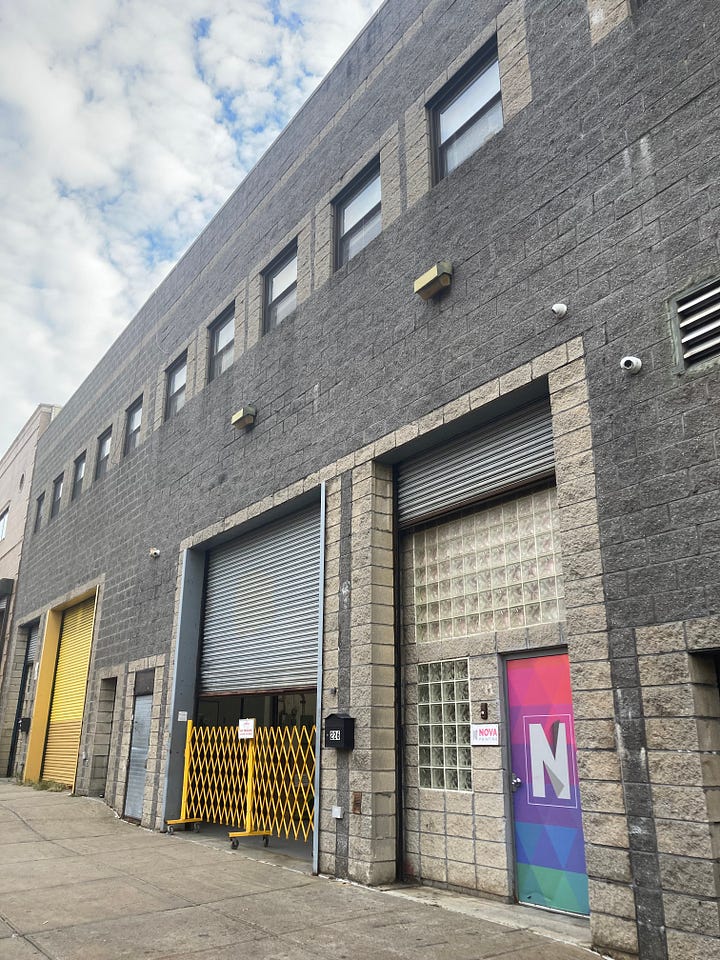
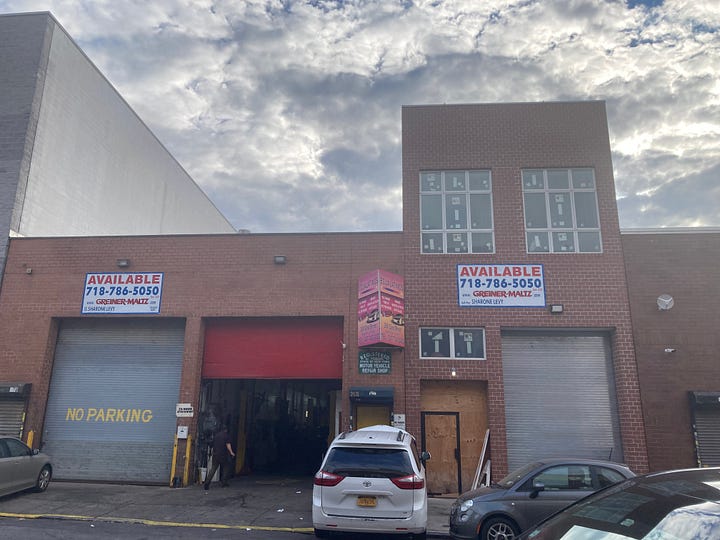
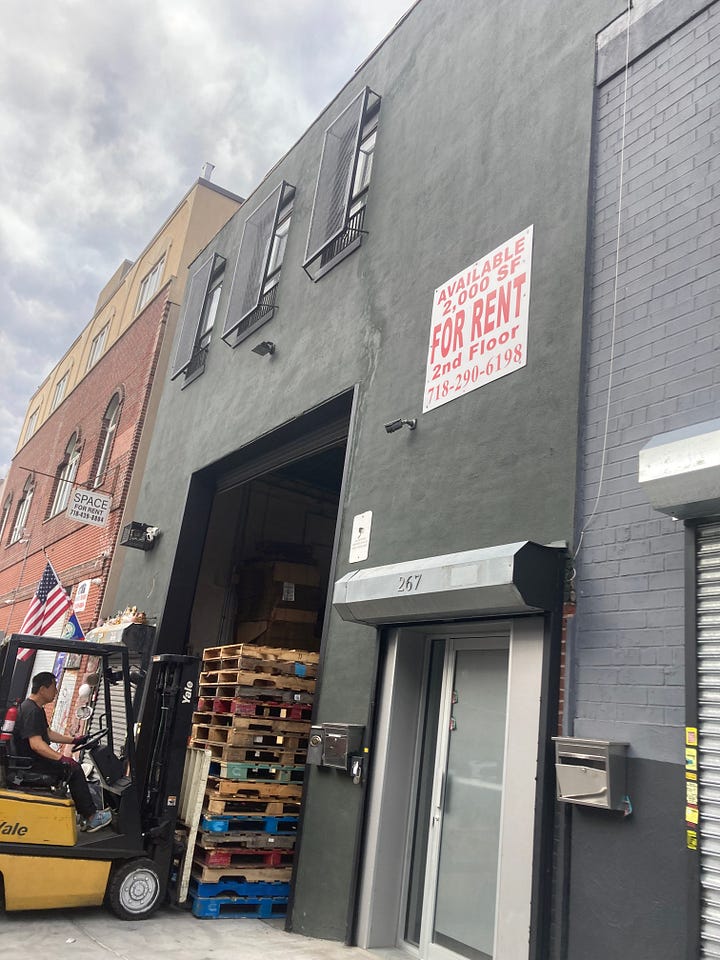
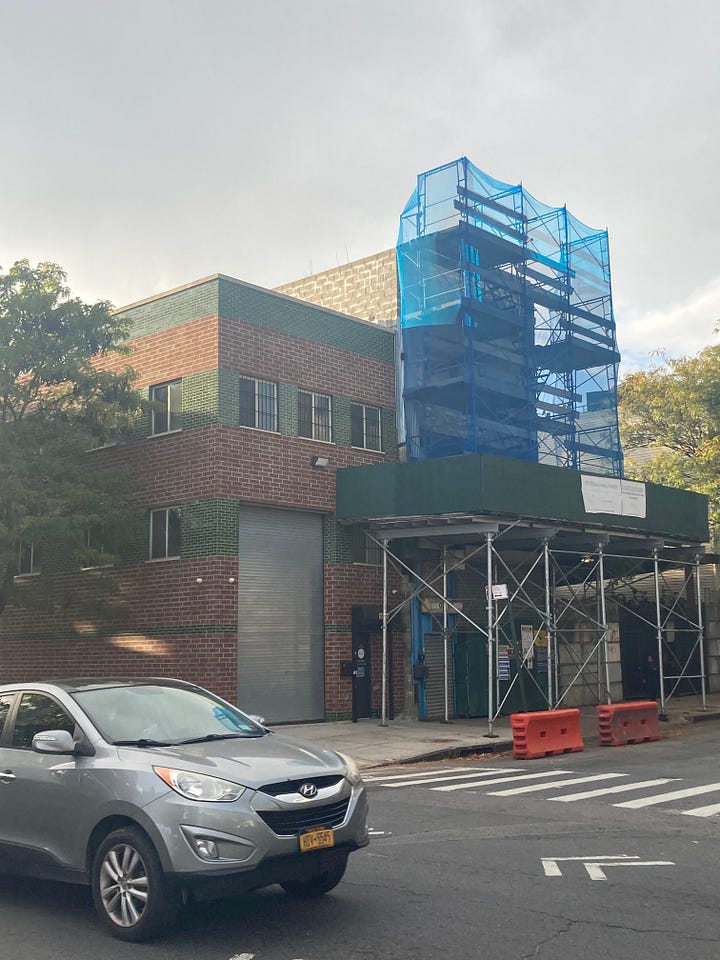
These spaces – built as early as 1930 and still being constructed to this day – offer modest warehouse space ranging from 2,500-5,000 SF on average with office space on the second floor. What this does is it allows for the warehouse ground floor square footage to be maximized while still offering decent sized office on the second floor. Additionally, these buildings are almost always built full to the lot line to maximize the amount of warehouse space provided. Hold on Anthony, what about parking? There’s no lot space? Are you out of your mind? No, I am not, and neither are the hundreds of business owners in this neighborhood who operate their trucking businesses, HVAC companies, collision repair, general contracting, and so on, with perfectly sufficient warehouse space with high ceilings and clear heights to allow for parking inside.
See above for a graphic depicting the “Industrial Business Zone” or “IBZ”. What Brooklyn does well is it zoned specific districts for Industrial use only. Started in 2006 by the Bloomberg administration, the IBZ offers tax credits for businesses who move into the IBZ offering $1,000 for each employed individual. Not only that, but as an owner you will never have to worry about your building being re-zoned to residential use.
As Brooklyn and NYC thickened up over the years, the need for more housing was critical and still critical to this day. Swaths of neighborhoods were converted from mainly commercial use to residential to provide more housing. This is generally good practice, except when businesses now have no where to go. These zones are designated specifically for industrial and commercial uses and employ thousands of employees who specialize in various trades. This is imperative for the city’s economy that manufacturing, services, and distribution stay local and not overseas, so that jobs are created for the working-class and residents have plenty of options when it comes to service.
Also, cannot leave this part out, these zones are generally walkable.
When I have meetings with owners, I can take a train to these areas fairly easily and walk to my destination. This is true for the people that work here too. From my observation most owners are driving in from Long Island, New Jersey, Staten Island, etc., but what about the employees? They can still find quality work a transit stop away from their residence in Brooklyn without breaking the bank on buying a vehicle and having to maintain it on their commute to work every day. I think what other cities do wrong is they designate far flung industrial parks on the outskirts of town off a freeway ramp and away from civilization. I am not saying to mix manufacturing land use with residential land use, but having these businesses incorporated with the fabric of the city’s development pattern in some fashion makes it easier to attract employees and could incentivize young people to take on a trade as a career.
Brooklyn is an internationally recognized destination because of the foresight that individuals had decades before us. If we can apply the same foresight today, then Brooklyn will continue to endure for hundreds of years more. Shortsighted decision making is what stagnates cities and creates despair. Lifting the barriers so that the natural progression of the traditional development pattern can occur is what leadership should be focusing on. Not creating Affordable housing but housing that is broadly affordable. That phrase was coined by Strong Towns, and I think I will discuss that topic next. I am sure this piece could get a rise out of some people so if I am missing anything that makes Brooklyn great or not so great, please reach out. The opportunity to work in such a dynamic market is truly a pleasure and being able to not only observe but become proficient in how this market works from the perspective of someone who did not grow up here is pretty great. Share this article with someone you know who owns in Brooklyn and hear what their thoughts are, would be happy to hear their perspective as well.

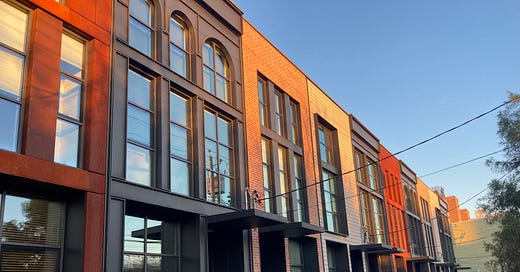


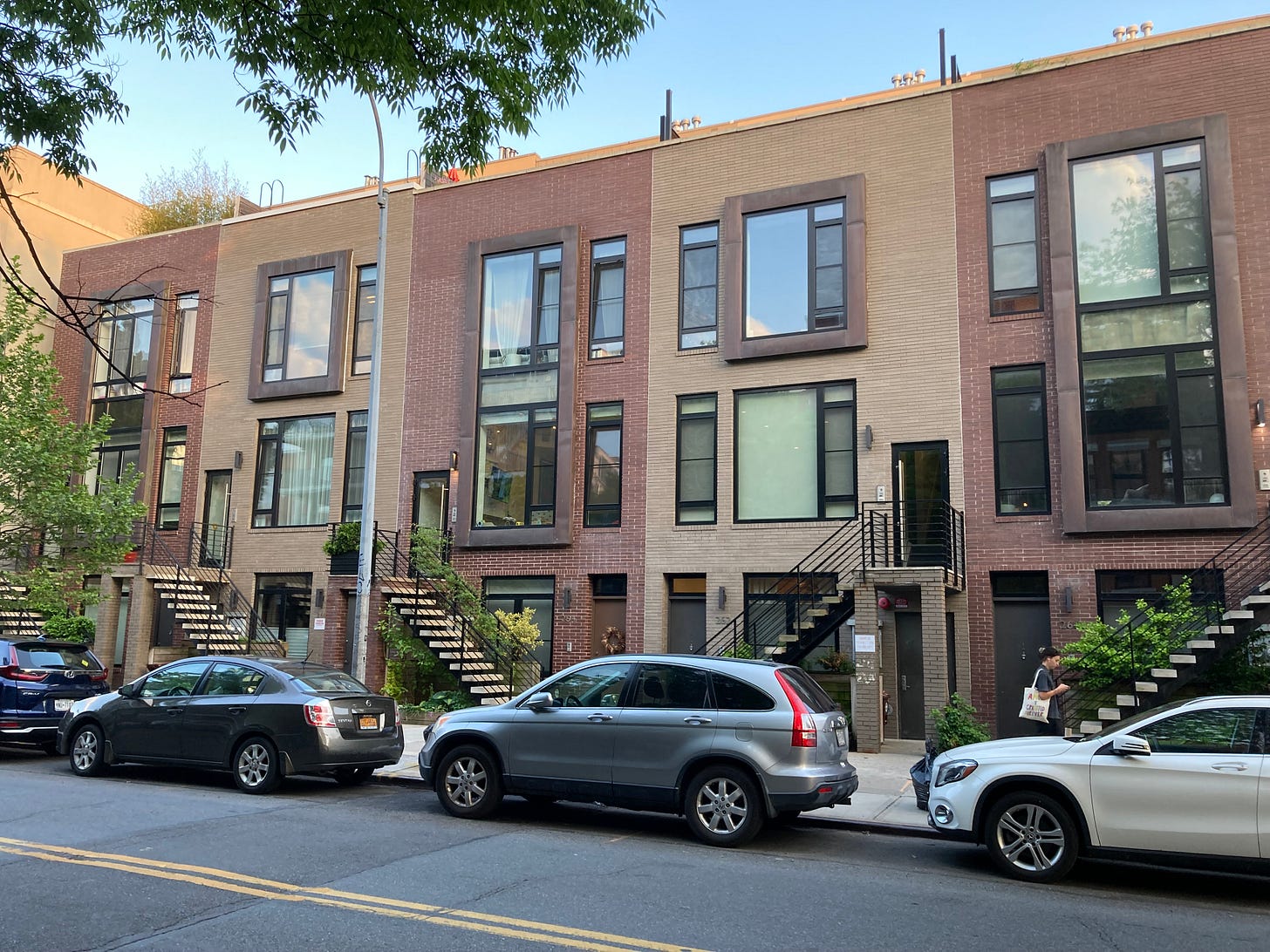

Amazing and Love the History !!!
One part that caught my attention was the types of houses Trump built but later deemed illegal due to zoning restrictions. Who made the zoning and exclusivity law to ban this style of property, and why?
I liked the connection you made to the increase contractor garages and the increase of tradesmen. Do other cites adapt this idea? If so, where? What are you pros and cons of constructing these types of properties?